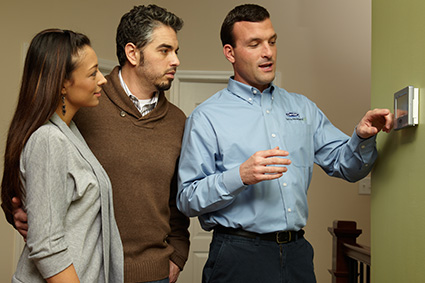 Are you using your thermostat properly to ensure total home comfort? Here are the top three mistakes homeowners make that affect home comfort and energy bills.
Are you using your thermostat properly to ensure total home comfort? Here are the top three mistakes homeowners make that affect home comfort and energy bills.
- Don’t Heat an Empty House. If you’re gone on vacation or away for the day, lower the temperature by five to 10 degrees to save on energy bills. Allow your furnace an hour or two to fully adjust to the temperature change.
- Avoid Extremes. Turning your thermostat up higher to warm your house more quickly isn’t efficient. A higher temperature does not mean faster heating—it wastes energy and overworks your furnace, which hurts your system in the long run.
- Don’t Stick to One Temperature. Leaving your thermostat set to one temperature at all times might seem like the efficient way to heat your home, but you’re actually missing out on saving money on energy bills. In addition to setting your thermostat back while you’re gone or at night, use a programmable thermostat to automatically adjust the settings so your home is warm when you return.
Do you know the difference between a thermostat and a control?
- A thermostat is the main energy-controlling device which allows you to adjust the temperature and humidity in your home for both your heating and cooling systems. Options range from non-programmable to programmable to Wi-Fi capable.
- A control goes beyond just temperature adjustment and energy usage. This device gives the homeowner control over humidity, room-by-room use, zoning, energy-use reporting, and more. It optimizes efficiency by constantly monitoring and adjusting your indoor comfort, allowing you to easily address your comfort concerns.
